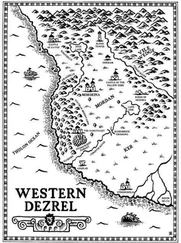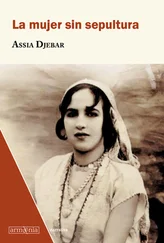Thomas-Osmann has sent him his finished book about Africa and expects some criticism and observations; in this way he will indeed continue to exist, if only in his writings, on the shores he has left behind for good. If Peiresc considers his book to be serious and of value, it may be that he, Thomas-Osmann will not to be forgotten back there … Though he remains in the sun on the outskirts of Tunis, his heart and his mind are journeying off with the book he sent to Peiresc.
Repudiated, but trying to make Peiresc forgive his new faith, he turns to his other friend, Aycard, telling him about further presents he feels obliged to send each of them.
That is when he sends the gift, a really nice gift, of a gazelle — the alzaron he calls it. It is the end of 1633; in January 1634 he writes that this gazelle was caught in Nubia, that “it has a wonderful way of running,” that he bought it from a great marabout in the city, and that someone else wanted it for the duke of Tuscany.
It will take several months for Peiresc to reply. Thomas, who meant to send him some little chameleons as well but got them too late to do so, inquires about his Relation de l’Afrique . In the end he confesses, “I admit that your long silence has caused me extreme pain and actually I attribute its cause to my sins …”
Gassendi, writing later about Peiresc, mentions the Nubian gazelle sent by Thomas and describes it. We know through him that it ended up in Rome at the estate of Cardinal Barberini.
The correspondence between Thomas-Osmann and his two friends comes to an end in 1636. Peiresc dies the following year and Aycard soon after. No further trace of Thomas d’Arcos, the renegade of Tunis.
However, it is neither the gazelle, which lives from this point on with the famous Cardinal Barberini in Rome, nor the scholarly work sent to Peiresc that makes this shadowfigure — a freed prisoner who became a Muslim — a silhouette that is inseparable from “our” story, from the shores of the Atlantic to the beaches lining the gulfs of Libya and Tunis, and all the way to the desert of Fezzan.
It was that Thomas was present, alone, in this first half of the seventeenth century traveling back and forth around Tunis or farther to the east with his truly ravenous gaze! Just before his conversion (sincere or strategic), he took a trip to the border between the two regencies, Tunis and Algeria. In a letter to Aycard, he mentions that Sanson Napollon, a knight of the king’s order and governor of the Bastion of France, is now before Tabarka, that he wants to capture Cape Nègre and abandon the Bastion for it. (Things would definitely be easier with the Tunisian powers than with the rulers of Algeria.)
In this atmosphere Thomas embarked on an archeological expedition to a nearby spot, the ruins in Dougga — which he calls Thugga. It is now the autumn of 1631.
He must have been amazed at the fields of columns standing or lying about, the disorder of the marble objects in the midst of luxuriant vegetation, and never tired of describing and drawing them. Two or three poor villages are spread out nearby. Then suddenly he finds something wonderful!
In the middle of this plain, an imposing monument, not a simple triumphal arch but a majestic, harmonious, even strange mausoleum. Thomas studies the sculptures, the inscriptions. All day long he does not leave it.
In the slowly setting sun, some children from the village come to bring him flatbread, eggs, and sheep’s-milk cheese — he knows there is only one thing for him to do. The most unusual and unexpected thing about this whole mausoleum is certainly this inscription on two parallel but not similar faces; he will copy it down meticulously. He studies the letters for a long time and corrects himself: “Two inscriptions, two scripts,” because he finally understands that the magnificent stele is composed of a bilingual text.
He is not sure he will be able to return soon; a year earlier in his first letter to Aycard, he reported that he had been in the entourage of his then “patron” four leagues from Tunis, at La Calle, “where ancient Utica lay.” He had been drawn there by his curiosity about the Roman past.
Even though he is unable to read any of the signs, he suspects that one of the scripts on the two faces of the stele is Punic. For a moment he muses over the final moments of the Carthaginian presence: he tells himself with tears in his eyes that what he is copying down dates at least from the second century before Christ! So this space, these stones, these signs that he cannot understand, have remained inviolate in this place for more than eighteen centuries!
If one speech, one solemn declaration is inscribed there in the Phoenician language, before (or after) Carthage was abandoned to the flames, the other side would bear the same declaration, but in what language? The language of the Vandals? No. Or that of some other vanished population?
He asks himself no more questions. He sits down. Although his tired eyes are weeping now from the strain, he works away at copying these mysterious signs!
Three days later, back in Tunis, his mind still smarts from the fire of this new enthusiasm. He had no witness, not a single confidant in his entourage, and he feels frustrated. Who will there be to come back to this after him? Who will be able to decipher the strange characters?
He spends days copying the double inscription several times over. He decides to send a copy to Peiresc, who does not respond. His curiosity, or his instinct, faced with the mystery, begins to lapse when he hears no echo. Neither Peiresc nor Aycard seem to think his discovery of any value …
It is then, during the following months, that Thomas’s desire for apostasy occurs: as if, drawn by an obscure call from something far back in time, something unknown and as far back and ancient as these stones in Dougga, his soul regained a sort of equilibrium thanks to this conversion — which he referred to as “a shift.”
In June 1633 a learned man, a Maronite, came through Tunis; he was a scholar of oriental languages and, writes Thomas, “highly respected in Rome” by the pope. His name is Abraham Echellen, and the reason for his being in Tunis is to negotiate the buying back of Christian slaves.
In great excitement, Thomas (from now on Osmann), with the text from Dougga in hand, introduces himself to Echellen. He will be able to read it! he thinks eagerly, and waits there respectfully with lowered eyes.
The Levantine studies the copied characters with a magnifying glass for a moment: “This is neither Syrian nor Chaldean,” he asserts. “Perhaps certain characters bear a sort of resemblance to some ancient Egyptian! I shall have to study them at length once I am back in Rome. I shall work at identifying them if you let me have this copy!”
He promises to send Osmann in Tunis the results of what he discovers.
Thus, well before the gazelle reached Cardinal Barberini, this paper with the double inscription, copied by the former slave, ends up in Vatican City. Is put away in the paper archives. Lies dormant there.
As for Peiresc, he will not know what to do with these “hieroglyphs.” Later Glassendi will describe the gazelle from Nubia at length but will disregard these drawings sent by “the Provençal renegade.”
Thomas, good old Thomas d’Arcos, we do not know how or where he dies, whether as a Christian or as a Muslim. Thomas, between two shores, between two beliefs, will be the first person to transmit a bilingual inscription whose mystery will lie dormant for two more centuries.
THE YEAR 1815 is the year Napoleon fell from power. The man feared by all the thrones of Europe is locked up for good. The Ancien Régime — its monarchies brought back out of the cupboard, its emigrés back in their châteaus and estates — is reestablished after Waterloo.
Читать дальше












